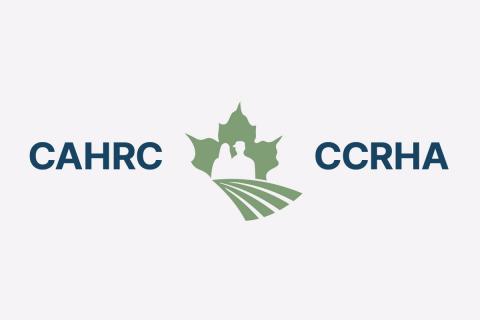CAHRC: Developing solutions to the agriculture labour problem
In the agriculture industry, whether you are a primary producer, agriculture-related business or industry organization, finding a reliable supply of labour can be more than challenging. That is why the Canadian Agricultural Human Resource Council (CAHRC) started investigating the potential of involving underrepresented groups, like young Canadians, to fill the labour gap in agriculture-related fields. In keeping with this line of thinking, there is now support for employers who are interested in hiring students.
Growing Opportunities is a CAHRC initiative funded by the Government of Canada through Employment and Social Development Canada (ESDC) that connects employers, post-secondary institutions and students. The goal is to establish sustainable working relationships between these groups to be able to meet future labour demands for agriculture.
Initiated in 2021, Growing Opportunities delivers the Student Wage Placement Program (SWPP) for employers willing to hire post-secondary students from both agriculture and non-agriculture backgrounds with the aim of growing the agricultural workforce. Students with a Work Integrated Learning (WIL) components are eligible to apply as are students who can demonstrate a linkage between the job placements and their academic courses.
“We wanted to build on our existing relationships with post-secondary institutions,” commented Nadee Imran, Program Manager for Growing Opportunities. “As a member of Co-operative Education and Work-Integrated Learning Canada (CEWIL), we have inroads into many of the co-op work placement programs and connections to program coordinators. It just makes a lot of sense to capitalize on those relationships.”
A win-win all the way around
Jennifer Wright, Executive Director of CAHRC, emphasizes that Growing Opportunities benefits both employers and post-secondary students.
“We’re focused on improving youth participation in agriculture, at the same time as boosting the labour force, she says. “And we will now have access to more talent – and a different pool of talent that we might not have thought of before. It’s about being creative in identifying the possibilities for the agriculture workforce, and about taking collaborative approaches.”
Wright adds, “Now our goal is to expand the number of post-secondary students and employers who are participating. We’re looking for more companies who are interested in taking on students and creating a positive ag-related experience to foster a new generation of workers for the industry.”
Who is eligible?
Growing Opportunities covers a wide range of employers and employment opportunities for students.
Registered Canadian businesses and not-for-profit organizations from the agriculture industry are eligible. This includes businesses and organizations related to primary production (both crops and livestock), greenhouses, horticulture, aquaculture, veterinary clinics servicing farm animals/livestock, farm equipment dealerships, input dealers, agriculture focused media agencies – and more!
Eligible students include those registered as a domestic student in a full or part time program at a recognized Canadian post-secondary institution. They must also take a work placement recognized by their institution as a work-integrated learning component in connection with a course, degree, certificate or diploma.
Understanding “net new”
During the funding application process, the employer’s eligibility for the funding is assessed based on the “Net New Requirement” criteria. What this means is that the program will only support hiring additional students that the employer would not be able to hire without the funding support.
When they apply, employers are required to answer a few questions to determine the net new requirement eligibility. They are asked if the term they are applying in is the first time they are accessing the funding. If the answer is “YES,” then they are asked how many students they hired in the previous fiscal year without the funding. The response is then recorded as the baseline number for that business. Starting this term, they will need to hire a greater number of students than the baseline year.
For employers who have received funding in a previous year, if an employer hired two students last year and received two subsidies, they will still be asked how many students they hired the year prior to first accessing SWPP funding. Employers must hire more than that baseline year to receive for the additional hires in the current year.
Through Growing Opportunities, agri-employers can receive 50% of the wages (to a maximum of $5,000) for each net new placement. Additionally, employers who hire students from under-represented groups (including women in science, technology, engineering and math; Indigenous students; newcomers; persons with disabilities; visible minorities; and first-year students) can receive up to 70% of the wages (to a maximum of $7,000) for each net new placement.
As easy as 1,2,3
CAHRC understands business owners are busy people and one of their goals was to make the application process as hassle-free as possible. There is minimal paperwork and applying is completely online, which takes only 20-30 minutes per student.
First, employers sign up at any time throughout the year for Outcome Campus Connect (Canada’s largest online campus recruiting platform) and submit a funding application along with a job posting. CAHRC notifies the employer within 14 days whether they are eligible for the subsidy program.
Once a student is hired, CAHRC confirms student eligibility with the employer. The student and employer are then approved, and wage is reimbursed to the employer within 45 days of the end of the work term.
Employer responses to the application process have been very positive. Lori Atkins, Dairy Lane Systems Limited stated that:
I was pleasantly surprised with the amount of work it wasn’t! It was a seamless process, I had excellent support when I had questions and the payment we received came in very timely. Definitely, it was a beneficial program for the small amount of work it created.
To find out more about how Growing Opportunities can contribute to your workforce and how to apply, see the CAHRC website or contact Kelsey Courtney at kcourtney@cahrc-ccrha.ca.
